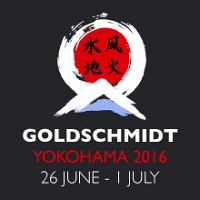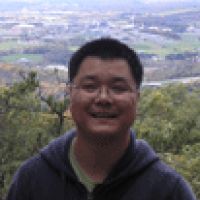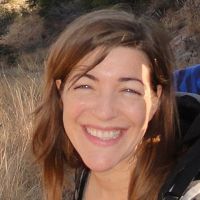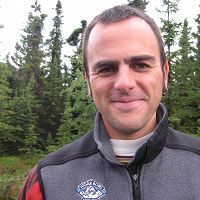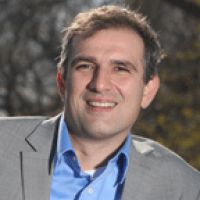CZ Science at Goldschmidt 2016, Yokohama
08 Feb 2016
News Source: Goldschmidt 2016
Yokohama, Japan. 26 June - 01 July, 2016. All aspects of geochemistry and related fields. Multiple sessions related to Critical Zone science.
For an overview of the conference, visit http://goldschmidt.info/2016/
Multiple sessions involve Critical Zone science, including:
- 11a - Weathering and Erosion: Quantifying and Elucidating Earth Surface Processes in the Critical Zone and the Sedimentary Records
- 11e - Ecological Drivers of Biogeochemical Cycles Under Changing Environment
- 11f - Root Meets Soil: A Hotspot for Biogeochemical Processes
- 11g - Towards international Critical Zone research in the Anthropocene: the biogeochemistry of ecosystem services
- 13g - Organic Matter Dynamics As Controlled by Erosion and Deposition
- 14e - Interactions of Natural Organic Matter (Humic Substances) with Minerals, Metals and Microbes Across Scales
Early- Career Meeting: Towards a Global Critical Zone Network: International Early Career Meeting in Yokohama
Wednesday 29th June 17:00-19:00
Location: Room 315
11a - Weathering and Erosion: Quantifying and Elucidating Earth Surface Processes in the Critical Zone and the Sedimentary Records
Lin Ma, Damien Lemarchand, Fang-Zhen Teng, Pamela L. Sullivan, and Jérome Gaillardet invite you to submit abstracts to the 2016 Goldschmidt session "11a: Weathering and Erosion: Quantifying and Elucidating Earth Surface Processes in the Critical Zone and the Sedimentary Records under Theme 11 Weathering and Erosion. Abstract submission is open now until February 26, 2016.
http://goldschmidt.info/2016/program/programViewThemes#session11a
Keynote: Derek Vance (ETH Zürich)
Complex interactions and processes govern the evolution of the Critical Zone, the permeable near-surface layer of the Earth’s continents. The Critical Zone provides vast array of ecosystem service and helps support life-sustaining resources such as soils, water, and biota. Furthermore, water-rock interactions shape continental surfaces and may control the sedimentary and oceanic geochemical budget over a large range of time scales. This implies complex relationships and feedbacks between tectonic, erosion, climate and, more recently, an anthropogenic pressure. This session invites state-of-the-art contributions that feature process-based and modeling research on the Critical Zone processes and the interpretation of sedimentary records. In particular, we welcome contributions addressing critical issues and uncertainties on 1) the production and transport of soils and sediments; 2) watershed hydrodynamics; 3) elemental and isotopic fluxes to the ocean; and 4) interpretation of sedimentary records. We invite contributions that utilize innovative isotopic methods or combine multiple toolsets (isotopes, elements, real-time sensors, modeling, and geophysics) to quantify processes with rates over multiple timescales from seconds to millennia to geologic times, and to understand isotope fractionation and element partitioning and cycling during low temperature geochemical and biological processes. We encourage contributions of researchers using multiple isotope systems at the exact same site or in the same sedimentary record to elucidate Earth surface processes. Finally, we welcome contributions that employ isotopic systems to understand the impact of humans on the Critical Zone and the sedimentary records.
11e - Ecological Drivers of Biogeochemical Cycles Under Changing Environment
Katerina Dontsova, Le Roux Gael, Zsuzsanna Balogh-Brunstad, and Pierret Marie-Claire invite you to submit abstracts to the 2016 Goldschmidt session "11e: Ecological Drivers of Biogeochemical Cycles Under Changing Environment" under Theme 11 Weathering and Erosion. Abstract submission is open now until February 26, 2016.
http://goldschmidt.info/2016/program/programViewThemes#session11e
Keynote: Shin Nagai (Japan Agency for Marine-Earth Science and Technol)
Single biogeochemical processes are better and better known in the critical zone, however interactions and cascading effects between biogeochemical compartments and ecological actors are under-studied. For example, weathering processes are stronglyaffected by biota (microorganisms and plants), but it is difficult to quantify and predict the effect and the rates of biological weathering, because of its interdependence on plant growth and development, and on abiotic processes. This is even more difficult if ecosystems are subjected to climate shifts and management changes. To evaluate interdependencies between processes in critical zone, frontier ecosystems can be of particular interest due to their sensitivity to changes. This session invites presentations about biological and/or ecological effects on biogeochemical cycles and weathering on multiple scales with particular focus on the frontier critical zones such as mountainous, boreal or arctic areas. Studies of human impact with cascading loops (species introduction, forest management, local practices) are also welcome.
11f - Root Meets Soil: A Hotspot for Biogeochemical Processes
E. Marie Muehe and Marco Keiluweit invite you to submit abstracts to the 2016 Goldschmidt session "11f: Root Meets Soil: A Hotspot for Biogeochemical Processes under Theme 11 Weathering and Erosion. Abstract submission is open now until February 26, 2016.
http://goldschmidt.info/2016/program/programViewThemes#session11f
Keynote: David McNear (University of Kentucky)
One of humankind’s most pressing challenge in the 21st century is global water, food and energy security. Plants - and their interactions with the soil – are key players in tackling this challenge successfully, but are increasingly influenced by climate and land use change. To estimate global change impacts on carbon, nutrient or water balances of ecosystems, and the fate of contaminants, it is crucial to understand the myriad ways in which plant roots interact with soil systems and their components. Physical, chemical and biological processes dynamically link the root with the surrounding soil (i.e., the rhizosphere), influencing hydrology, gas exchange, nutrient and contaminant cycling, microbial diversity and function, and carbon storage. A comprehensive understanding of these root-mediated processes in soils requires scientific approaches ranging from nano- to ecosystem scales. Here we encourage contributions focused on the impact of plant roots on biogeochemical cycles in soils. Contributions could consist of, but are not limited to the effects of plant roots on organic matter cycling, metal reactivity, nutrient cycling (e.g., N and P), plant-microbe interactions, mineral weathering, soil formation, and contaminant dynamics (e.g., As, Cd, organics). Contributions of theoretical, experimental and field studies discussing the impact of global environmental change on root-soil interactions are especially welcome.
11g - Towards international Critical Zone research in the Anthropocene: the biogeochemistry of ecosystem services
Julia Perdrial, Adam Wymore, and Siliang Li invite you to submit abstracts to the 2016 Goldschmidt session "11g: Towards international Critical Zone research in the Anthropocene: the biogeochemistry of ecosystem services" under Theme 11 Weathering and Erosion. Abstract submission is open now until February 26, 2016.
http://goldschmidt.info/2016/program/programViewThemes#session11g
The Critical Zone spans from the top of the vegetative canopy to the actively cycled groundwater providing life sustaining ecosystem services such as freshwater, fertile soil, contaminant attenuation, carbon sequestration and much more. However, rapid population growth and global climate change during the Anthropocene poses challenges to the Earth’s Critical Zone as the CZ, and its associated ecosystems, are pushed to balance increased demand (e.g. crop yield) while maintaining the CZ’s natural structure and other important ecosystem functions. Biogeochemical processes, the theme of this session, are central to providing these services and supporting the sustainability of the CZ at local, regional and global scales.
We invite contributions that use biogeochemistry tools to understand how the CZ responds to stresses imposed by Anthropocene forcings including (but not limited to) climate events, acidification, land-use and degradation, fertilization, urbanization, soil erosion, drought and wildfire. Study systems can range across pristine to urbanized gradients. Abstracts reporting on international collaborative research efforts are welcome as well as contributions with visions on how to expand local/regional research to form a global network. It is not a requirement that research or presenters/authors are officially affiliated with a Critical Zone Observatory. Rather we wish to highlight international research that examines biogeochemical processes with Critical Zone perspective.
13g - Organic Matter Dynamics As Controlled by Erosion and Deposition
Asmeret Asefaw Berhe, Sharon Billings, Thanos Papanicolaou, and Neal Blair invite you to submit abstracts to the 2016 Goldschmidt session "13g: Organic Matter Dynamics As Controlled by Erosion and Deposition" under Theme 13 Organic Geochemistry. Abstract submission is open now until February 26, 2016.
http://goldschmidt.info/2016/program/programViewThemes#session13g
Over a broad range of time scales, soil organic matter (SOM) processes are strongly influenced by soil erosion, deposition and the development of landscape macro/microtopography. Through the natural coevolution of geomorphic, pedogenic, and ecological processes in the critical zone or by punctual changes in these processes as a result of intensive management, dynamic landscapes establish characteristic hierarchies of physicochemical controls on organic matter stability. These mechanisms include physical isolation of organic matter (OM) inside aggregates, the chemical interaction of OM with soil minerals, and the molecular structure of primary or altered soil organic matter that defines the state of SOM persistence/resilience. For this session, contributions will be solicited from works that address soil organic matter dynamics as controlled by hillslope runoff, erosion, deposition, macro/microtopography, and riverine transport. We encourage contributions from works that investigate variables that control fate of soil organic matter after lateral mass movement events.
14e - Interactions of Natural Organic Matter (Humic Substances) with Minerals, Metals and Microbes Across Scales
Craig Rasmussen, Rota Wagai, Katherine Heckman, Andreas Kappler, and Thomas Borch invite you to submit abstracts to the 2016 Goldschmidt session "14e: Interactions of Natural Organic Matter (Humic Substances) with Minerals, Metals and Microbes Across Scales" under Theme 14 Biogeochemistry. Abstract submission is open now until February 26, 2016.
http://goldschmidt.info/2016/program/programViewThemes#session14e
Keynote: Scott Fendorf (Stanford University)
Understanding spatio-temporal variation in soil natural organic matter (NOM) stabilization mechanisms is central to identifying predictors of soil organic matter vulnerability to loss and stability, and presents a grand challenge to the earth science community. NOM is stabilized, both chemically and physically, through interaction with minerals, metals and microbes. Important processes include sorption and redox reactions of natural organic matter with metals (electron transfer processes); microbial interactions with NOM and the relationship between NOM-metal and NOM-mineral complexes. These mechanisms are amplified/modulated across spatial and temporal scales in patterns of NOM abundance and mean residence time. This session will explore the mechanisms of soil organic matter stabilization and degradation at nano- to global scales in a multidisciplinary forum, with a special emphasis on the influence of the mineral phases and microbe-mineral interactions on NOM stabilization.
Towards a Global Critical Zone Network: International Early Career Meeting in Yokohama
Wednesday 29th June 17:00-19:00
Location: Room 315
http://goldschmidt.info/2016/eventView?eventId=55
This meeting is open to Early Career scientists interested in Critical Zone Science (postdoctoral scholars and pre-tenure faculty as well as faculty that just got tenured) with the goal to bring the early career CZ community together and to provide a venue where scientists can expand their network.
News Source:
READ MORE from Goldschmidt 2016 >>
News Category:
RESEARCH
People Involved
CZO
-
Shale Hills, INVESTIGATOR, COLLABORATOR
-
Calhoun, Shale Hills, INVESTIGATOR, COLLABORATOR
-
Catalina-Jemez, INVESTIGATOR
-
Catalina-Jemez, Luquillo, Reynolds, INVESTIGATOR
-
Luquillo, INVESTIGATOR
-
Sierra, INVESTIGATOR
-
Calhoun, INVESTIGATOR
-
IML, INVESTIGATOR
-
IML, INVESTIGATOR
-
Catalina-Jemez, INVESTIGATOR
-
Calhoun, Luquillo, INVESTIGATOR, COLLABORATOR
Explore Further
